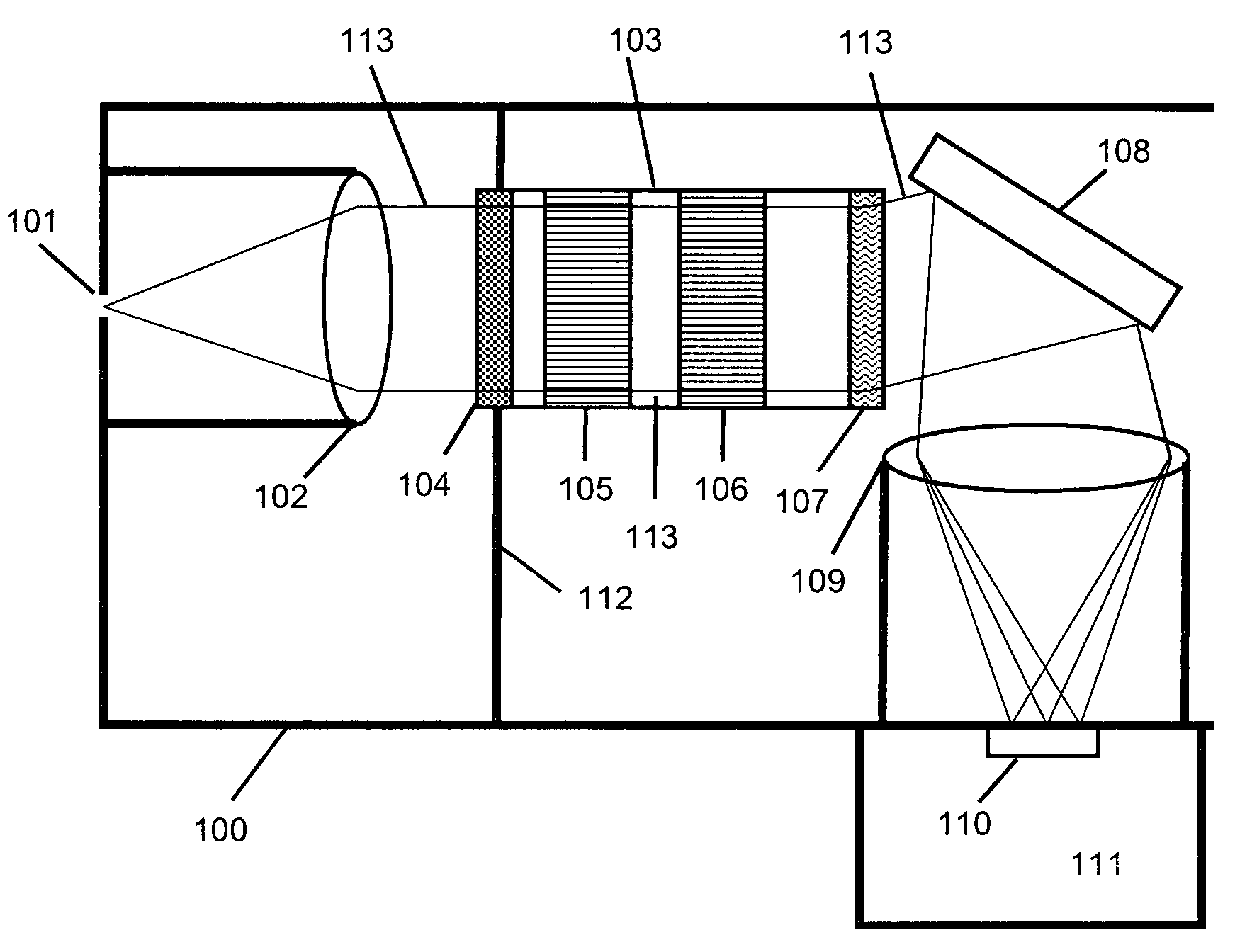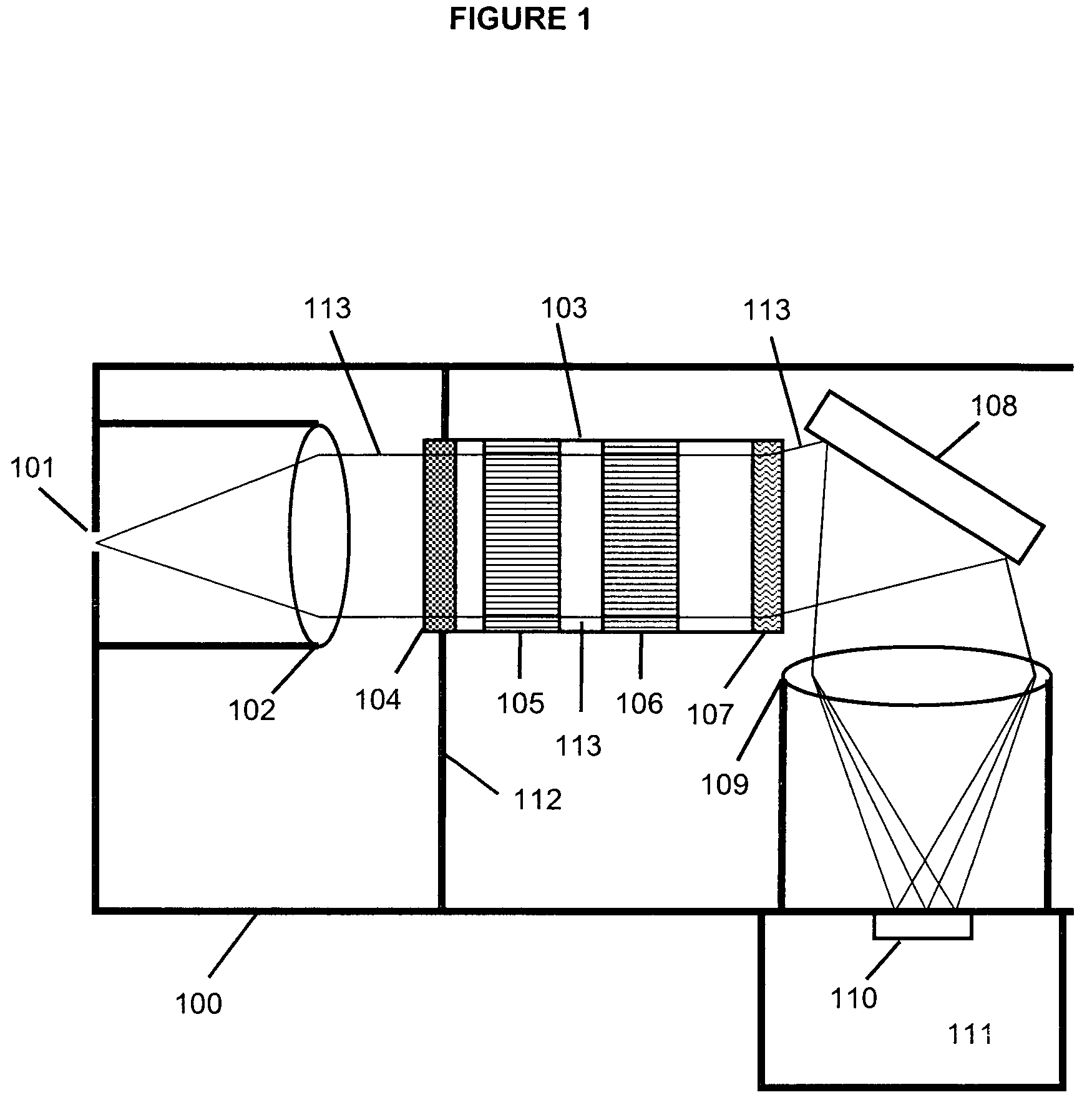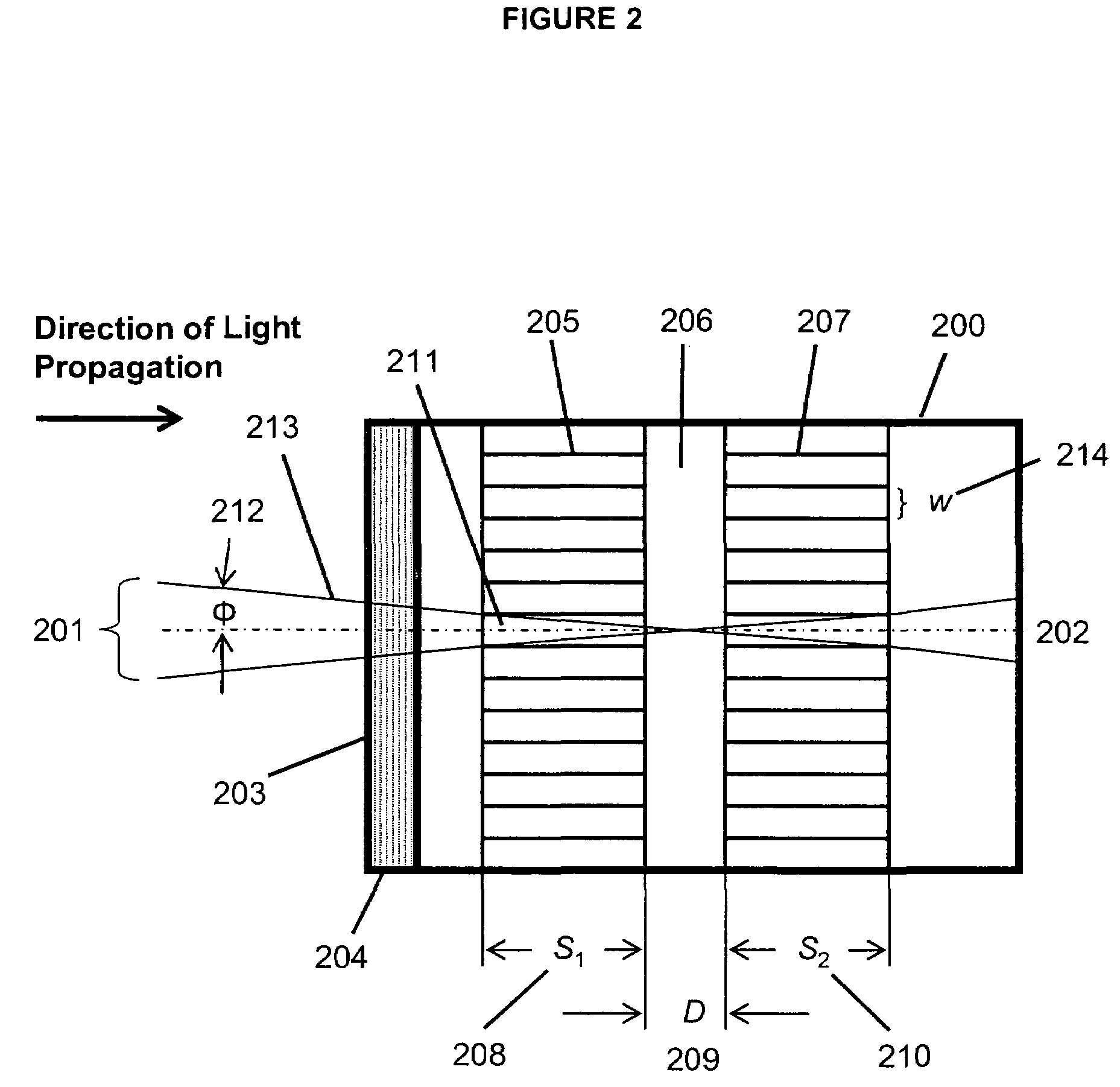Compact and rugged imaging Raman spectrograph
a raman spectrograph, compact technology, applied in the field of optical spectroscopy systems, can solve the problems of lack of robustness, compactness, cost-effective construction required for routine deployment in the field of on-line industrial process automation and control, prior-art designs do not incorporate design methodologies, etc., to maximize grating efficiency and enhance optical throughput and efficiency
- Summary
- Abstract
- Description
- Claims
- Application Information
AI Technical Summary
Benefits of technology
Problems solved by technology
Method used
Image
Examples
Embodiment Construction
[0020]An embodiment of the compact and rugged imaging Raman spectrograph of the present invention is schematically shown in FIG. 1. The spectrograph 100 has an input optical slit 101 that admits light into the spectrograph, and at the same time serves to spatially limit the input slit image dimensions for the purposes of determining the spectral resolution and spatial extent of the slit image. The slit will have dimensions ranging from 5 μm to 200 μm in the spectral dimension, and heights ranging from 1 mm to 12 mm in spatial dimension. The light from the slit is then collimated preferably by a commercially available multi-element anti-reflection (AR) coated compound lens 102 (or lens assembly). The lens 102 has typical focal lengths, depending on the resolution and spectral range requirements that range from 10 mm to 100 mm, and with f / #'s (focal ratio number) ranging from f / 1.0 to f / 2.8. The invention permits the user to change this lens in order to change the focal length which p...
PUM
 Login to View More
Login to View More Abstract
Description
Claims
Application Information
 Login to View More
Login to View More - R&D
- Intellectual Property
- Life Sciences
- Materials
- Tech Scout
- Unparalleled Data Quality
- Higher Quality Content
- 60% Fewer Hallucinations
Browse by: Latest US Patents, China's latest patents, Technical Efficacy Thesaurus, Application Domain, Technology Topic, Popular Technical Reports.
© 2025 PatSnap. All rights reserved.Legal|Privacy policy|Modern Slavery Act Transparency Statement|Sitemap|About US| Contact US: help@patsnap.com



